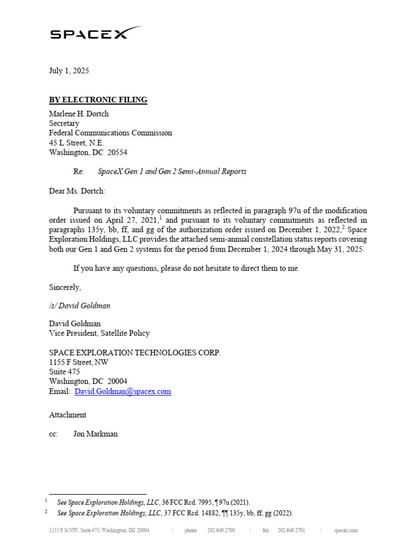New SpaceX report on Starlink conjunctions and deorbits (a.k.a. dumping tons of metal/plastic/solar panels/computers into the upper atmosphere) https://www.scribd.com/document/883045105/SpaceX-Gen1-Gen2-Semi-Annual-Report-7-1-25
Scariest part:
472 Starlinks were burned up in the atmosphere in Dec-May. Assuming each satellite is 800kg, and 50% aluminum by mass, that's 1 ton of aluminum PER DAY.
The natural infall rate of aluminum from meteoroids is 0.3 tons per day. Starlink has been ~3x that, for the last 6 months.

SpaceX Gen1-Gen2 Semi-Annual Report (7!1!25) | PDF | Satellite | Space X
SpaceX submitted its semi-annual reports for Gen 1 and Gen 2 satellite constellations, detailing their commitment to sustainability and safety in satellite operations. The report highlights SpaceX's conservative approach to collision avoidance and deorbiting, emphasizing the importance of transparency and collaboration among satellite operators for space sustainability. Additionally, it addresses challenges in collision avoidance processes and the need for consistent data sharing among operators to enhance overall safety in space.